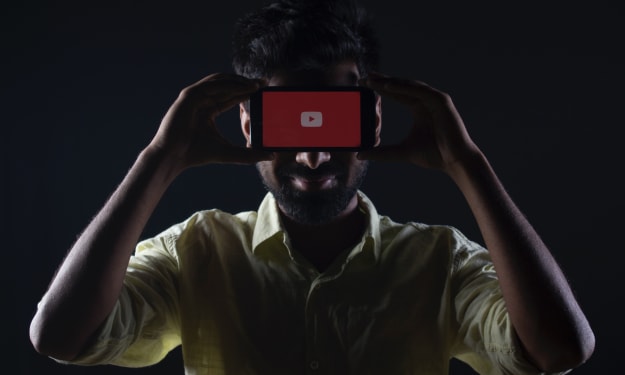NFT in the art of world
NFT and the Challenges for the Traditional Art Market

1.Monetization of Digital Art:
NFTs in the art world allow artists to monetize their digital artwork in a new way. Artists can create digital art, mint it as an NFT, and then sell it on blockchain marketplaces to collectors. This allows artists to earn money from their work and collectors to own a unique piece of digital art. Monetization of digital art through the use of non-fungible tokens (NFTs) is a relatively new concept. NFTs are a type of digital asset that are unique and cannot be replaced by another asset, similar to how a physical work of art is one-of-a-kind. Artists and creators can use NFTs to certify ownership and authenticity of their digital art and collectibles, and sell them to buyers on a blockchain marketplace. The buyer then holds the NFT as proof of ownership of the digital asset. This has opened up new opportunities for digital artists to profit from their work, as it is now possible to sell unique,one-of-a-kind digital art just like physical art.
NFTs have opened up new opportunities for digital artists to monetize their work, as they can now sell their art directly to collectors and bypass traditional gatekeepers, such as galleries and art dealers. Additionally, because NFTs are unique, they can increase the value of digital art over time,similar to physical art.Monetization of digital art through non-fungible tokens (NFTs) is a relatively new concept that has gained popularity in recent years. NFTs are a type of digital asset that are unique and cannot be replicated or replaced, similar to physical art. They are created on blockchain platforms, which allow for the creation, buying, and selling of digital assets in a decentralized and secure manner.
Artists can create digital art, such as digital paintings, animations, and even tweets, and then mint them as NFTs. These NFTs can then be sold on various marketplaces, such as OpenSea and Rarible, where buyers can purchase them using cryptocurrency, such as Ethereum. The ownership of the NFT is recorded on the blockchain, and the buyer is the only person who can prove ownership of the digital art.
2.Immersive and Interactive Digital Art:
NFTs have opened up new opportunities for artists to create immersive and interactive digital art. Artists can create animations, 3D models, AR and VR experiences which can be minted as NFTs and sold to collectors. This has led to a surge of interest in digital art, and has also led to a rise in the number of digital art marketplaces and platforms.
Immersive and interactive digital art refers to artworks that use technology to create a fully-engaging and interactive experience for the viewer. These artworks can be displayed in various forms, such as virtual reality (VR) or augmented reality (AR), and can be collected and traded as non-fungible tokens (NFTs). NFTs are unique digital assets that are stored on a blockchain, which allows for ownership and provenance to be tracked and verified. This combination of immersive technology and blockchain-based ownership allows for new possibilities in the creation, distribution, and collecting of digital art.
Immersive and interactive digital art refers to digital artwork that immerses the viewer in a multi-sensory experience, often incorporating elements of virtual reality(VR) and augmented reality (AR) to create a sense of presence and engagement. Interactive digital art allows the viewer to actively participate in the artwork by manipulating or influencing the elements of the piece. NFTs, or non-fungible tokens, are a type of digital asset that can be used to represent ownership of a unique digital item, such as a piece of artwork.NFTs are stored on a blockchain, which is a decentralized and distributed digital ledger, and can be bought, sold, and traded like traditional physical artworks.
The combination of immersive and interactive digital art with NFTs allows for a new way to experience and own digital art, as it provides a sense of ownership and scarcity that was previously not possible with traditional digital art.Additionally, NFTs can be used to authenticate and prove the ownership of the digital art, making it possible to sell it on a open market. Some examples of immersive and interactive digital art that have been sold as NFTs include virtual reality experiences, 3D animations, and interactive installations.
3.Authenticity and Provenance:
The use of NFTs in the art world raises questions about the authenticity and provenance of digital art. Artists can mint multiple copies of the same digital artwork as NFTs, which can make it difficult for collectors to verify the authenticity of the artwork they are buying. Authenticity and provenance are two important factors that are considered when assessing the value and credibility of a non-fungible token (NFT).
Authenticity refers to the authenticity of the underlying asset that the NFT represents. This can include things like digital art, collectibles, and other unique assets. In order to ensure authenticity, the NFT must be verified by the creator or a trusted third party. This verification process typically involves using a digital signature or other cryptographic methods to confirm that the NFT is truly unique and authentic.
Provenance, on the other hand, refers to the history and ownership of the NFT. This includes information about who created the NFT, who has owned it in the past, and any other relevant information about its history. This information is typically recorded on the blockchain, which is a decentralized and tamper-proof ledger that can be used to track the ownership and history of digital assets.
Together, authenticity and provenance are important factors that help to establish the value and credibility of an NFT. By verifying the authenticity of the underlying asset and tracking its provenance, buyers and sellers can have confidence that the NFT they are buying or selling is truly unique and valuable. This helps to ensure that the NFT market remains fair and transparent, and that buyers and sellers can trust the value of the NFTs they are buying or selling.
4.Copyright and Ownership Issues:
NFTs in the art world also raise questions around copyright and ownership. The digital artworks are not physical and can be easily replicated, which can make it difficult for artists to protect their work and assert ownership.A non-fungible token (NFT) is a type of digital asset that represents ownership of a unique item, such as a piece of artwork or collectible.Because NFTs are digital assets, they raise a number of legal issues related to copyright and ownership.
One key issue is that of copyright ownership. When an artist creates a digital artwork and sells it as an NFT, who owns the copyright to that artwork? The artist may retain the copyright, but the buyer of the NFT would own the unique digital asset. This can lead to confusion and disputes over who has the right to reproduce or display the artwork.Another issue is the question of whether NFTs can be considered "property" under the law. Some countries have laws that specifically address ownership of digital assets, while others do not. This can make it difficult to determine who has the right to sell or transfer an NFT.
Additionally, NFTs are stored on the blockchain, which is a public ledger that is open to anyone to view and access. This raises questions about privacy and security of NFT ownership.In summary, NFTs raise a number of legal issues related to copyright and ownership, including questions about who owns the copyright to a digital artwork and whether NFTs can be considered property under the law. Additionally, the usage of blockchain raises more questions about privacy and security of NFT ownership.
5.Speculative Bubble:
The use of NFTs in the art world has led to a rise in the price of some digital artworks, with some selling for millions of dollars. Some critics argue that this is a speculative bubble and that the prices are not based on the true value of the artwork. A speculative bubble in the NFT (non-fungible token) market refers to a situation where the prices of NFTs are driven up by speculation rather than by their actual value or utility. This can happen when a large number of investors, who are not necessarily interested in the underlying asset (e.g. a digital artwork), purchase NFTs with the expectation that they will be able to sell them at a higher price in the future. This buying frenzy can lead to an unsustainable increase in the price of NFTs, creating a bubble.
A speculative bubble can be driven by a variety of factors, including hype and media attention, the involvement of high-profile investors, and a lack of regulation. Additionally, the NFT market is relatively new and not well understood, which can make it more susceptible to speculation and manipulation.When a speculative bubble bursts, the prices of NFTs can crash, leaving many investors with significant losses. This can also lead to a decline in confidence in the NFT market, which can make it difficult for legitimate projects and artists to sell their NFTs.
It's important to note that many experts and analysts have raised concerns about the current state of the NFT market,with some saying that the market is in a speculative bubble. However,there are also those who argue that the market is still in its early stages and that the prices of NFTs will continue to rise in the long term.
In summary,a speculative bubble in the NFT market refers to a situation where prices of NFTs are driven up by speculation rather than by their actual value or utility.The buying frenzy can lead to an unsustainable increase in the price of NFTs,but when the bubble bursts,many investors may be left with significant losses,and it can also lead to a decline in confidence in the NFT market.Some experts argue that the current NFT market is in a speculative bubble,but others argue that the market is still in its early stages.
About the Creator
Enjoyed the story? Support the Creator.
Subscribe for free to receive all their stories in your feed. You could also pledge your support or give them a one-off tip, letting them know you appreciate their work.






Comments
There are no comments for this story
Be the first to respond and start the conversation.